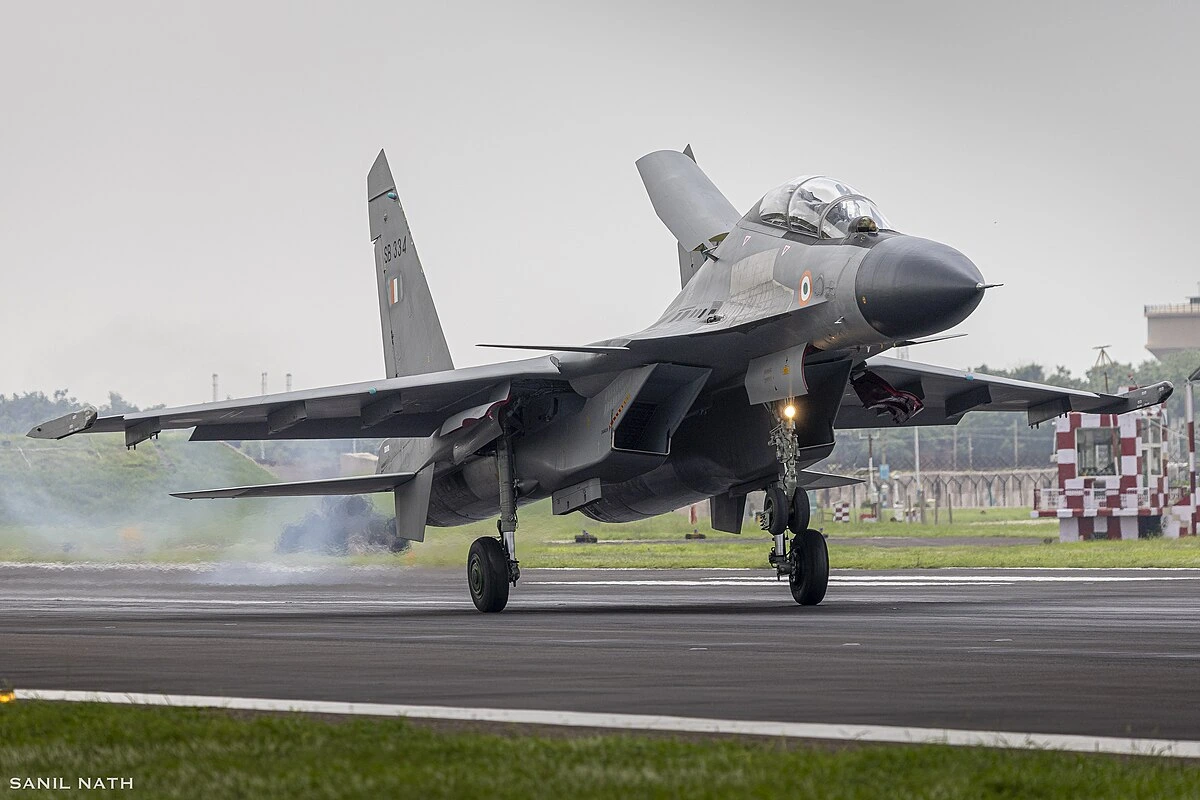The Indian Air Force (IAF) has issued a Request for Information (RFI) for the procurement of 100 Advanced Self-Protection Jammer (ASPJ) pods for its frontline Su-30MKI fighter jets, marking a major push to boost survivability and electronic warfare (EW) capabilities under the Super Sukhoi modernisation programme.
The ASPJ pods will utilise Digital Radio Frequency Memory (DRFM) technology to receive, analyse, and retransmit modified radar signals — effectively deceiving enemy sensors and missiles. Unlike traditional noise-based jammers, these advanced systems can create false radar targets and execute range and velocity gate pull-off manoeuvres, significantly enhancing aircraft survivability in high-threat environments.
Officials indicate that the system will deliver 360-degree protection, countering radar-guided missile threats from any direction. The jammers will feature Gallium Nitride (GaN)-based Active Electronically Scanned Array (AESA) transmitters — offering superior power efficiency, compact size, and faster electronic beam steering. The high Effective Radiated Power (ERP) will ensure robust countermeasures against enemy surveillance and fire-control radars.
Integration with Super Sukhoi Upgrade
The ASPJ acquisition forms a key component of the Super Sukhoi upgrade, which aims to transform the Su-30MKI fleet into a 4.5-generation air superiority platform. The program includes replacing the aircraft’s N011M Bars PESA radar with DRDO’s GaN-based AESA radar ‘Virupaksha’, offering longer detection ranges, enhanced tracking, and greater resistance to jamming.
A new all-digital glass cockpit, improved Radar Warning Receivers, and integration of indigenous Beyond Visual Range (BVR) missiles and precision-guided munitions are also part of the comprehensive upgrade plan.
The ASPJ pods will work in tandem with a new Defensive Aids System (DAS) to form a unified electronic warfare suite, drastically improving mission effectiveness and survivability in contested airspaces.
Indigenous Collaboration and Aatmanirbhar Focus
Under the Make in India framework, the IAF is prioritising domestic production and technology transfer for the project. The RFI suggests collaboration between DRDO’s Defence Avionics Research Establishment (DARE) and Bharat Electronics Limited (BEL) to design and manufacture the ASPJ systems indigenously.
This partnership is expected to bolster India’s self-reliance in critical EW technologies, ensure cost-effective sustainment, and pave the way for integration of similar systems into future platforms such as the Tejas Mk-1A, Tejas Mk-2, and the Advanced Medium Combat Aircraft (AMCA).
Extending Combat Relevance
The Super Sukhoi upgrade, coupled with the ASPJ integration, is projected to extend the operational life of the Su-30MKI fleet by nearly two decades. The introduction of DRFM and GaN-based systems will not only modernise the aircraft but also bring India’s air combat capabilities closer to global standards.
By merging local innovation with strategic technological upgrades, the ASPJ initiative represents a crucial step in India’s drive toward air dominance and electronic warfare superiority in the coming decades.













